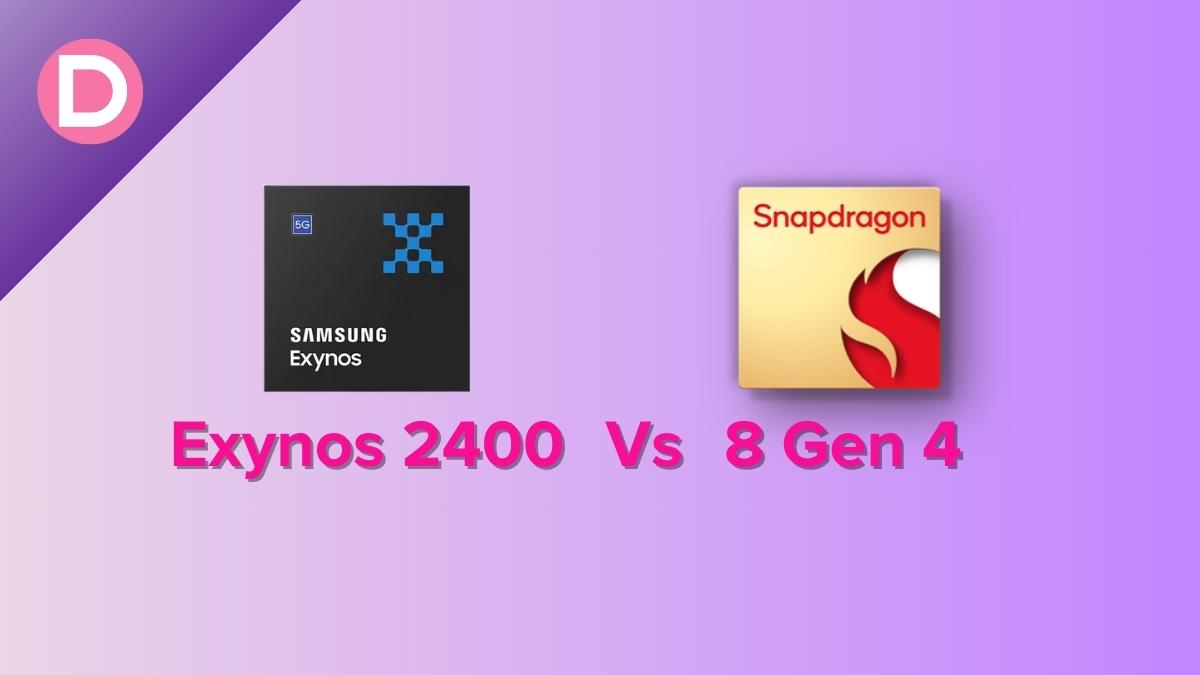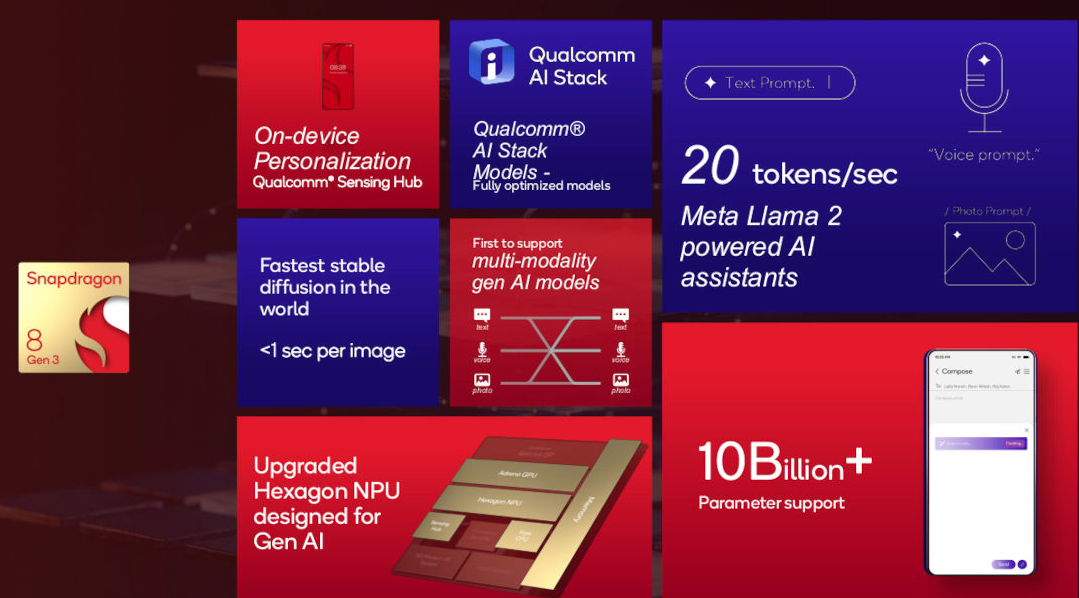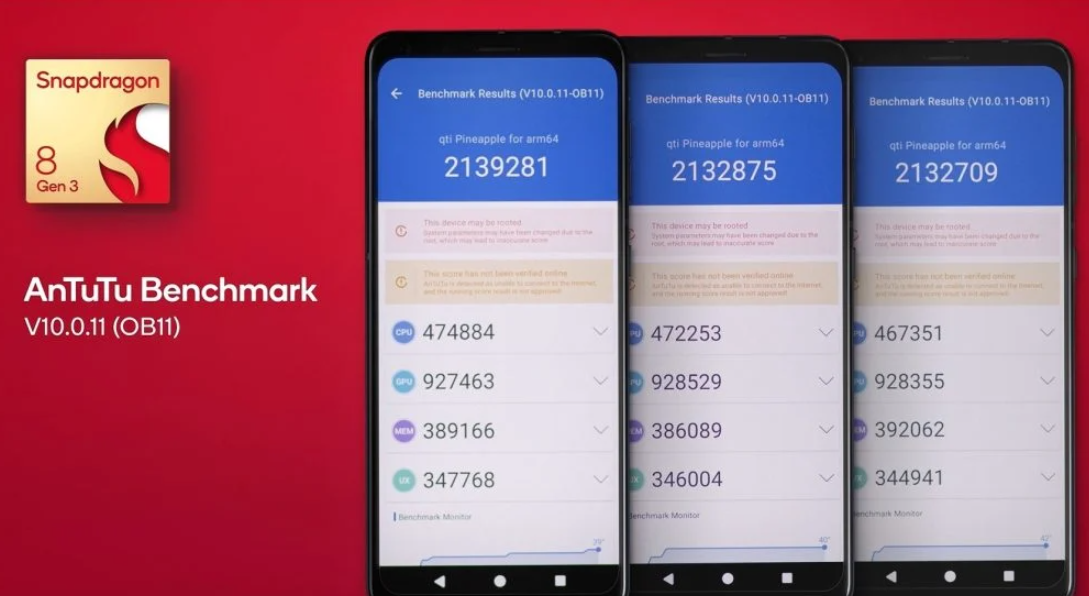Samsung Semiconductors held its System LSI Tech Day event in San Jose, California. It was held on October 6th, 2023, and we saw the introduction of the Exynos 2400 flagship processor. The processor is said to be coming with the Galaxy S24 series. It will be a direct successor to the Exynos 2200, with an expected big leap in performance. The Exynos 2400 processor is said to have a 1.7x increase in CPU performance and a 14.7x boost in AI performance compared to its predecessor.
However, one of the Exynos 2400’s biggest rivals, the Qualcomm Snapdragon 8 Gen 3, also packs quite the punch. The processor, which was launched recently, shows an insane leap over its predecessor, the 8 Gen 2. In the CPU benchmark app Geekbench, the 8 Gen 3 seems to be 30% faster. The single-core scores were a less impressive 7-8% improvement, but the multi-core scores were a solid 22-23%.
In terms of GPU, the new Adreno 750 GPU is said to be 25% faster than the 8 Gen 2’s Adreno 740. This is said to bring a 40% improvement in ray tracing performance. In addition, the 8 Gen 3 improved in all these aspects while being more efficient.
CPU Comparison
Their CPU architecture is different; the Snapdragon 8 Gen 3 uses an 8-core CPU cluster with a good balance between performance and efficiency, despite the 8 Gen 3 dropping one of the small cores (efficiency cores) from its predecessor.
The 8 Gen 3 features one Prime core, the Cortex-X4 (Max performance core) at 3.3 GHz, and the clock speed might vary depending on the chip variant. Some of them are clocked higher for better performance.
The chip has 3 performance cores (Cortex-A720) at 3.15 GHz and two mid-tier performance cores (Cortex-A720) at 2.96 GHz. The chip effectively uses the Cortex-A720 cores five times, but the clock speeds differ. Finally, there are two Cortex-A520, the efficiency cores at 2.27 GHz.
The Exynos 2400 has a 10-core CPU cluster with even more focus on the efficiency. The Cortex-X4 (Prime core) is clocked at 3.2 GHz, slightly below the 8 Gen 3. It uses five Cortex-A720 cores. Two have a 2.9 GHz clock speed, and three have a 2.59 GHz clock speed.
The main difference between these two chips is that the Exynos 2400’s CPU cluster contains four efficiency cores, two times the efficiency cores of the 8 Gen 3. The Exynos 2400 has four Cortex-A520 small cores at 1.96 GHz.
The 8 Gen 3 uses a very efficient 4nm fabrication for its node, while the Exynos 2400 uses a 4nm Samsung node. It’s mostly the new 4LPP+ technology, with decent yield rates. However, we cannot make any assumptions about thermals or sustainability until there are more practical tests with the chip in an actual device.
According to early benchmark leaks, the Exynos 2400 scores ~6500 in the multi-core Geekbench test and ~2000 in the single-core test. That’s still behind the ~7500 and ~2300 of the Snapdragon 8 Gen 3. Historically, the TSMC 4nm chip performs better with both performance and sustainability. It also does better with thermal management and overall efficiency.
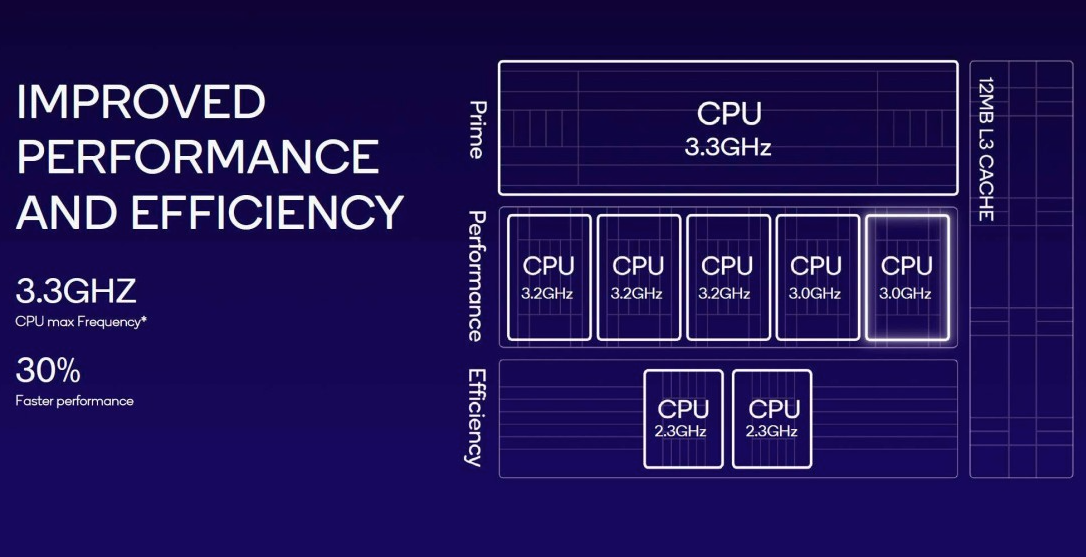
GPU Comparison
The Snapdragon 8 Gen 3 uses the Adreno 750 GPU (with the Adreno 700 architecture). It has a 770 MHz frequency and supports up to DirectX 12.1 mobile graphics. The chipset also supports Ray Tracing and is allegedly more efficient than both the Apple A17 Pro and its predecessor, the 8 Gen 2.
In the GPU-specific Antutu test, the 8 Gen 3 scores over 900,000 points, which is very good.
On the other hand, the Exynos 2400 uses the Xclipse 940 GPU from AMD. It has a 1.2 GHz clock speed and supports Ray Tracing hardware. However, we’re unsure whether developers will optimize games for this chip or the Snapdragon. It doesn’t take away from the fact that the Exynos 2400 has a powerful GPU that might take on the 8 Gen 3 quite well, depending on the tuning.
However, the early results are not very promising, and Qualcomm appears to beat the Exynos 2400 by a landslide despite a lower clock speed. In the GPU-specific Antutu test, the Exynos 2400 scores under 600,000 points, a whole generation or two behind the 8 Gen 3. However, we have to wait for further optimization of the Xclipse GPUs.
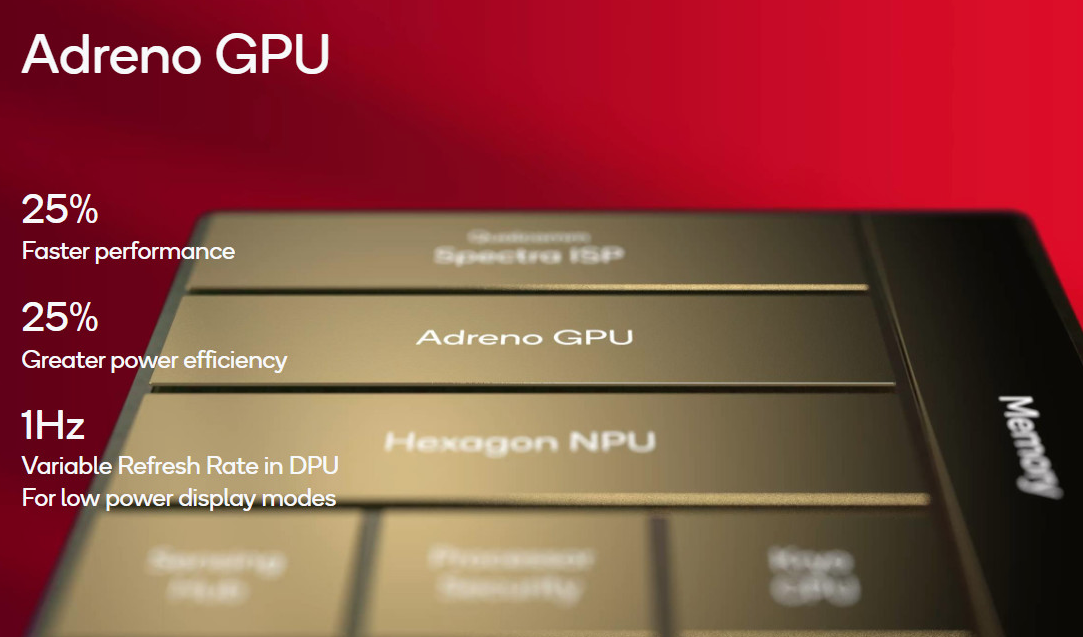
AI & ISP
Samsung will allegedly launch the S24 series with Artificial Intelligence as a main USP. The phones will have AI features similar to Pixel phones. We expect Generative AI, too, and a better and smarter Bixby. For now, Samsung has many teasers about real-time translations of messages and calls.
Samsung is also planning to improve the zoom of photos with a new “Zoom anywhere” feature. It uses AI to smartly recognize objects and maintain details even if you zoom in on any part of it. This will also bring several other AI features like Photo Editing, and they’re clubbing it all as a part of Galaxy AI or Samsung Gauss.
The 8 Gen 3 and Exynos 2400 have a significant leap from their predecessors in AI performance. The 8 Gen 3 has exceptional AI performance, with the Llama 2 model (made in partnership with Meta). You can run AI models on the device exclusively. The new Hexagon Ai engine is apparently 98% faster and 40% more efficient. It’ll have excellent text, image, and speech processing for a reliable on-device AI experience.
For example, it can take data from your location and your sensors, use existing data about your age, and plan a trip for you. It can also run Open AI’s Whisper model.
The only major advantage of the Snapdragon 8 Gen 3 is the ISP. It supports 12-layer real-time semantic segmentation even better than the 8 Gen 2. The chip can smartly identify subjects like faces, trees, greenery, or skies and use AI to enhance the overall output. It also supports real-time Night Vision for videos; companies can produce excellent results if they use this to improve low-light footage.
The Exynos 2400 has a major 1470% leap in overall AI performance. It has an excellent text-to-image generation tool that looks very competitive. Samsung will use the 8 Gen 3 in some areas and the Exynos 2400 in others (only Snapdragon for the Ultra). However, they must keep the overall AI experience similar across all devices. So we don’t expect much difference in their overall performance. The ISP definitely goes to Qualcomm, thanks to Semantic Segmentation.
Other benchmarks
The Exynos 2400 scores around 1.6 Million points on Antutu overall. This is a rather promising score, but it’s still behind Qualcomm. The 8 Gen 3 scores around 1.9 Million and sometimes breaks the 2 Million mark on some devices.
The 3D Mark Wildlife tests are only out for the 8 Gen 3, and it scores 70% stability with 97% average FPS, according to Nanoreview. In the Geekbench Vulkan GPU test, the 8 Gen scores around 17,000 points, while the Exynos 2400 scores 15,500. In the Open CL test, the 8 Gen 3 scores 14,700 points, and the Exynos 2400 scores 14,900 points- and it’s the only benchmark where it’s slightly ahead.
There’s no major CPU throttling in the 8 Gen 3 test, and it’s well-controlled. We have to wait for further tests of 3D Mark Wildlife and Wildlife Extreme to determine the overall stability of the chipset. The 8 Gen 3 performs reasonably well and is stable in demanding games like Genshin Impact, according to a test from Beebom.
Conclusion
From what we know of these two chips, the 8 Gen 3 will get better optimization from developers for gaming. It also has a better ISP and an overall CPU cluster. The GPU and CPU are ahead of the Exynos 2400 in current benchmarks. We have to wait until the Exynos 2400 is in an actual device to test thermals.
The 8 Gen 3 and Exynos 2400 are on par with overall AI performance since 2024 phones are all about the AI buzz. The winner, for now, is the 8 Gen 3 since it uses a more reliable 4nm TSMC node.
